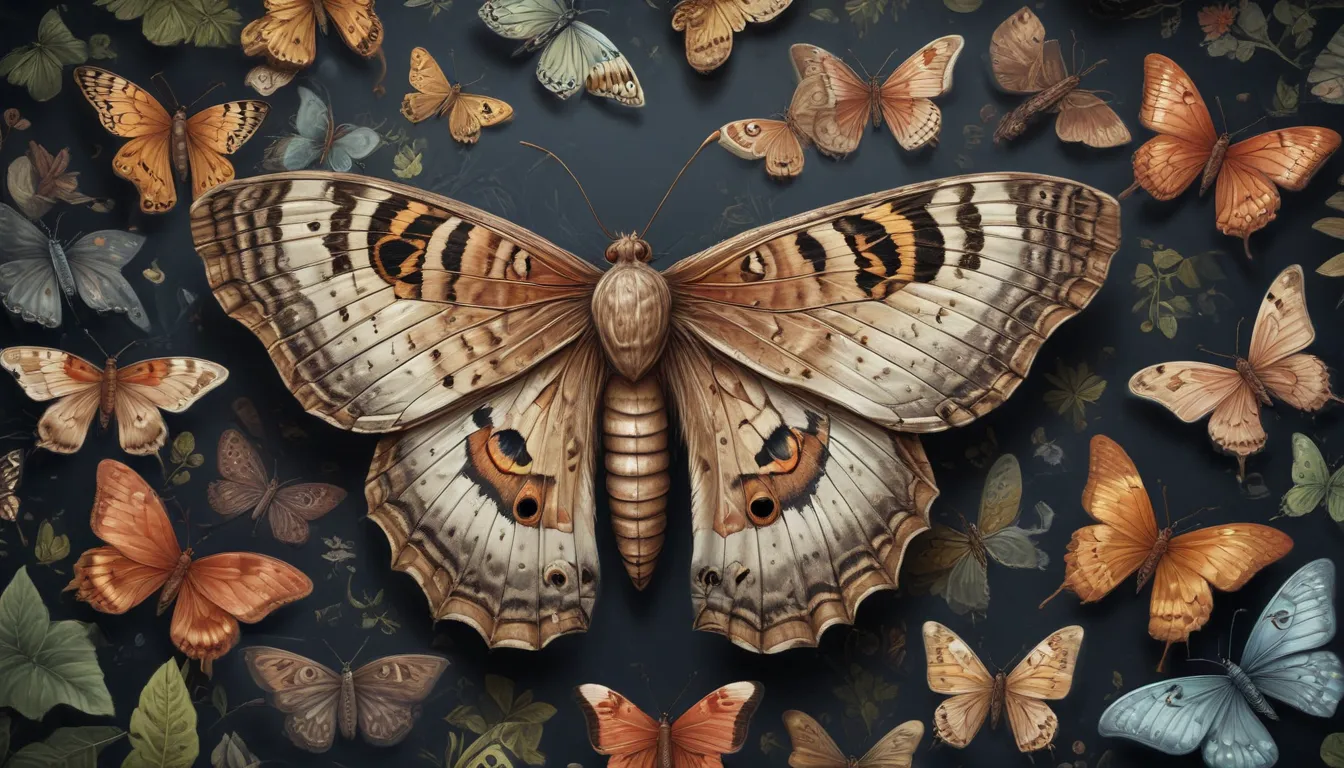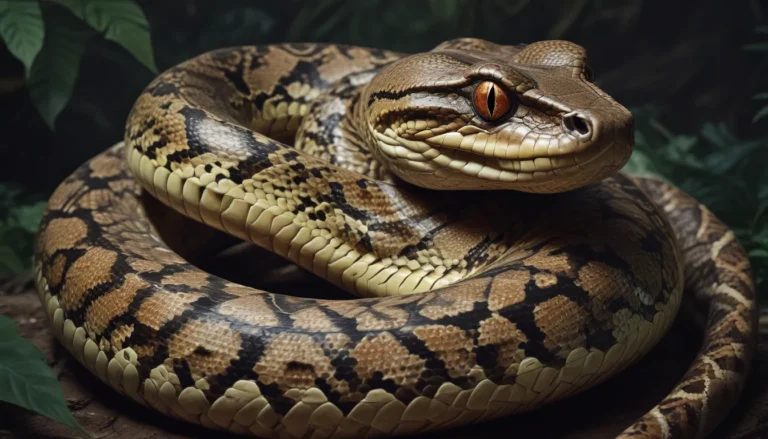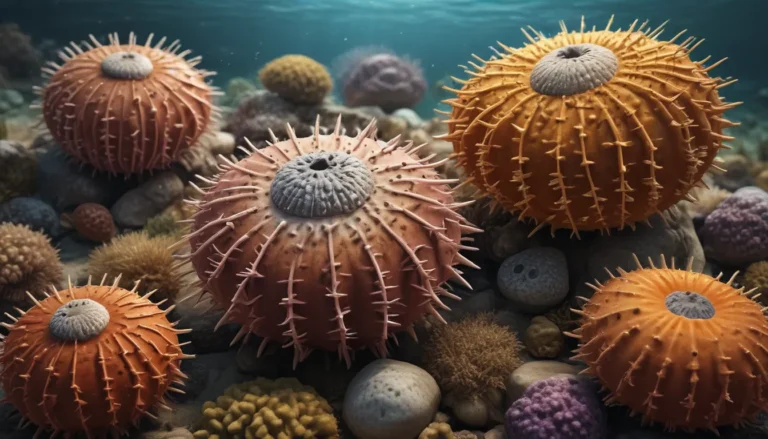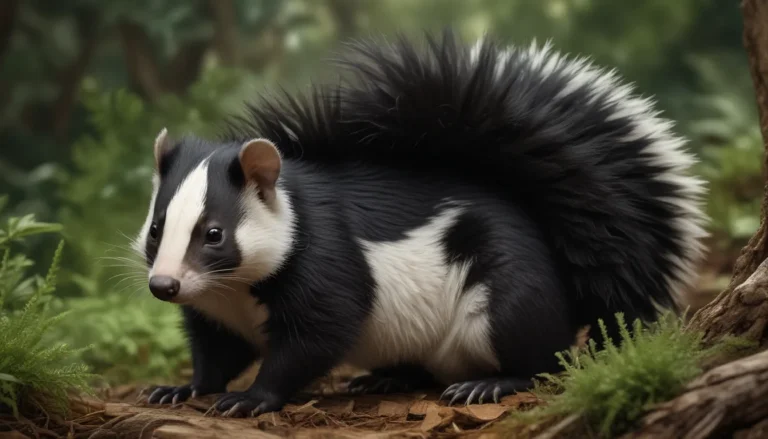The pictures we use in our articles might not show exactly what the words say. We choose these pictures to make you interested in reading more. The pictures work together with the words but don’t take their place. The words still tell you the important facts.
When it comes to the enchanting world of insects, moths often play second fiddle to their more popular cousin, the butterfly. However, these nocturnal creatures possess a unique charm and allure that have captivated the curiosity of both scientists and nature enthusiasts. Join us as we embark on a journey to discover 15 fascinating facts about moths that will illuminate their extraordinary characteristics and shed light on their often overlooked role in the ecosystem.
Diving into the World of Moths
1. Ancient Origins of Moths
Moths have stood the test of time, with fossil evidence dating their existence back at least 190 million years, making them one of the most ancient insect groups on Earth.
2. Diverse Moth Species
With approximately 160,000 known species of moths worldwide and an estimated 500,000 yet to be discovered, moths rank among the most diverse groups of insects on the planet.
3. Size Matters
From the minute pygmy moths with wingspans of mere millimeters to the majestic Atlas moth boasting wingspans up to 30 centimeters, moths come in a stunning array of sizes.
4. Nocturnal Wonders
Moths are predominantly nocturnal creatures, equipped with adaptations like keen senses of smell and ultraviolet light detection to navigate the darkness with precision.
5. Essential Pollinators
Contrary to misconceptions, moths play a crucial role in pollination, particularly of night-blooming flowers that depend on them to transfer pollen between blooms.
6. The Silk Connection
Renowned for their silk production, moths like the silkworm are revered for spinning cocoons that yield threads used in textiles valued for their strength and softness.
7. Masters of Camouflage
Moths have mastered the art of camouflage, utilizing coloring and patterns that seamlessly blend into their surroundings, confounding predators with their uncanny ability to disappear.
8. Intricate Antennae
Moths sport unique antennae of various shapes, sizes, and patterns that serve not only for scent detection but also play vital roles in communication and mating rituals.
9. Moths vs. Bats
Certain moth species have developed fascinating defensive strategies against predators like bats, employing evasive flight patterns in response to bat echolocation signals.
10. Bewitching Migrations
Moths partake in enigmatic long-distance migrations spanning hundreds to thousands of kilometers, with mechanisms guiding these journeys remaining shrouded in mystery.
11. Habitat Adaptability
Thriving in nearly every habitat except polar regions, moths exhibit remarkable adaptability to diverse environments, from deserts to urban areas.
12. The Circle of Life
Moth lifespans vary vastly across species, with some enduring mere days as adults while others survive for several months, contributing to the intricate ecosystem.
13. Symbolism and Folklore
Across cultures, moths symbolize transformation, mystery, and spirituality, weaving tales of enchantment and awe as they navigate the realms of myth and legend.
14. Ecological Guardians
Moths serve as vital components of ecosystems, bridging the gap as essential food sources for various animals and aiding in nutrient recycling and plant pollination.
15. Dispelling Misconceptions
Despite facing misconceptions due to their attraction to artificial lights, moths hold crucial ecological roles that warrant appreciation and acknowledgment for their contributions.
Exploring the Enigma of Moths
As we unveil the fascinating world of moths, we gain a newfound appreciation for their diversity, adaptations, and ecological significance. From their ancient origins to their multifaceted roles as essential pollinators and food sources, moths emerge as captivating denizens of the natural world. Their delicate wings and intricate patterns serve as testaments to the complexity and beauty of the animal kingdom.
FAQs: Unraveling Further Mysteries
Q: Are moths harmful to humans?
A: In general, moths pose no direct harm to humans, with only certain larvae causing damage to fabrics and stored goods.
Q: Do all moths eat clothing?
A: No, specific clothes moth species target natural fibers like wool, fur, and silk, with most moths exhibiting different feeding behaviors.
Q: Are moths attracted to light?
A: Yes, many moth species exhibit positive phototaxis, navigating by moonlight and drawn to artificial lights that can sometimes disorient them.
Q: Do moths have predators?
A: Yes, birds, bats, spiders, and certain insects prey on moths, contributing to ecosystem balance by regulating moth populations.
Q: How long do moths live?
A: Moth lifespans vary greatly by species, ranging from days to several months, showcasing the diversity within these remarkable insects.
Embracing the Enchantment of Moths
As we immerse ourselves in the world of moths, we witness their captivating complexities, from celestial navigation to transformative life cycles. These extraordinary creatures not only inspire awe but also play indispensable roles in maintaining the delicate balance of ecosystems. So, the next time a moth flutters by your path, take a moment to marvel at their wonder, for these unsung heroes of the night skies deserve our appreciation and respect.
Delve Deeper: Further Moth Discoveries Await
Explore the enchanting realm of moth orchids and their intricate ties with moths or uncover the captivating beauty of elephant hawk moths, sure to leave you spellbound. Embark on a thrilling journey into the world of moth sailing, steeped in rich history and adrenaline-pumping adventures. Each exploration promises a trove of knowledge and surprises, inviting you to delve deeper into the enthralling world of moths.
Wrapping Up: A Tribute to Moths
As we bid farewell to this exploration of moths, we celebrate their resilience, beauty, and vital contributions to our world. Let us continue to cherish these creatures for their ecological importance and unwavering grace, embracing them as integral members of the intricate tapestry of life. Remember, in the quiet flutter of a moth's wings lies a world of wonder waiting to be discovered.
Was this page helpful?
Our steadfast commitment to delivering enriching and credible content drives us to empower you with valuable insights and discoveries. Each fact shared is a testament to the collective wisdom and curiosity of our community, ensuring a diverse tapestry of knowledge that enlightens and inspires. Trust in our dedication to authenticity and quality as we embark on journeys of learning and exploration together.






